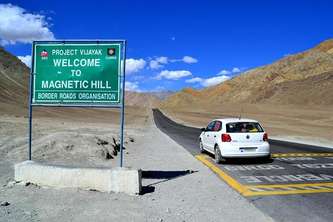12 Wildlife Sanctuaries In Rajasthan To Spend A Day Amidst The Wildlife In 2026!
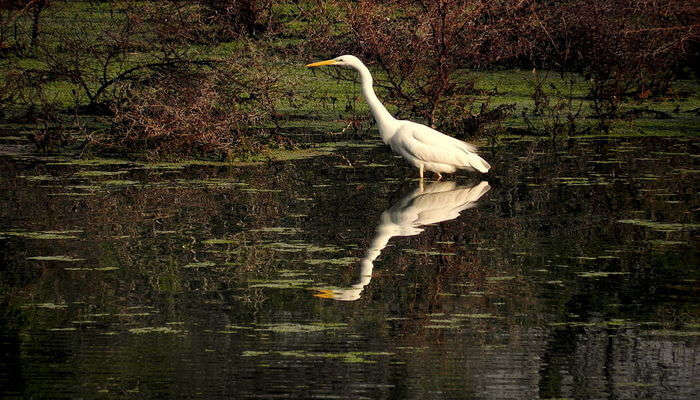
If you are planning to enjoy an exciting vacation, then the exotic wildlife of Rajasthan calls you for an unforgettable journey and holiday experience. The plethora of wildlife sanctuaries in Rajasthan has made it an oasis to innumerable species of rare birds and mammals. From semi green forests present in Mount Abu to the beautiful dry grasslands of the desert, from wetlands of Bharatpur to deciduous forest of Aravali, the varied topography attracts many migratory birds.
Keep your eyes wide open to witness birds such as Peacocks, Golden Oriole, Grey, Red Spur Owls, Parakeets, White Breasted Kingfisher, and Bulbul. If you wish to go closer to nature, visit these sanctuaries in Rajasthan today and explore.
12 Best Wildlife Sanctuaries In Rajasthan
Here are some of the best wildlife sanctuaries in Rajasthan which one must visit to enjoy a great time amidst the lush-greenery and wildlife. If you like to get in wild, then these wildlife sanctuaries in Rajasthan are the perfect spots for some time in the wilderness.
- Darrah Wildlife Sanctuary – Kota
- Kailadevi Wildlife Sanctuary – Karauli
- National Chambal Sanctuary – Kota
- Ramgarh Vishdhari Wildlife Sanctuary – Bundi
- Bassi Wildlife Sanctuary – Chittoragarh
- Jaisamand Sanctuary – Udaipur
- Gajner Wildlife Sanctuary – Bikaner
- Tal Chhapar Sanctuary – Churu
- Desert National Sanctuary – Jaisalmer
- Kumbhalgarh Wildlife Sanctuary – Kumbhalgarh
- Mount Abu Wildlife Sanctuary – Mount Abu
- Sita Mata Wildlife Sanctuary – Pratapgarh
1. Darrah Wildlife Sanctuary – Kota
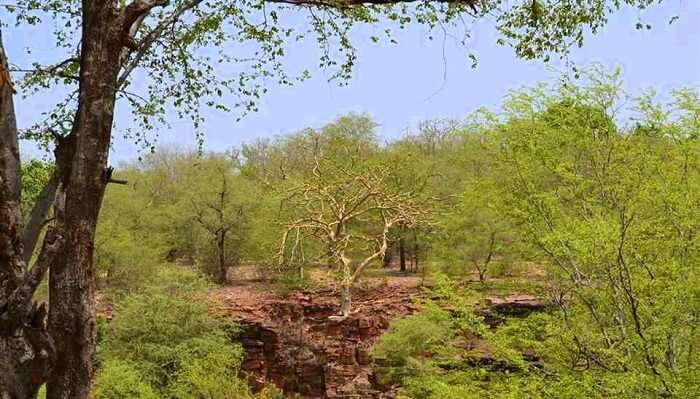
For wildlife lovers, the Darrah Wildlife Sanctuary is a perfect excuse for an excursion.The beauty of the forests and wildlife will impress you very much. The wildlife sanctuary was declared a protected reserve in the year 1955. In earlier times, the land where the sanctuary rests was a hunting ground for the Maharajas of Kota. With an uncountable number of tigers, rhinos and deers and widespread forest area, this was heaven. Presently, you can still find tigers, leopards, antelopes, nilgai and sloth bears.
Ideal for: Nature lovers, families
Ideal trip duration: 3 hours
Location: Darrah Wildlife Sanctuary
Best time to visit: October to March
How to reach: Being just 50 km from Kota, the sanctuary is easily accessible by bus and taxi.
Staying Options: Bhainsrorgarh Fort Hotel, Royal Heritage Hotel, Country Inn & Suites
Must Read: Visit Chokhi Dhani, Sonipat To See The Best Of Rajasthani Culture And Cuisine!
2. Kailadevi Wildlife Sanctuary – Karauli

Image Credits: Pooja Rathod for Wikimedia
The Kailadevi Wildlife Sanctuary is one of the most popular wildlife sanctuaries in Rajasthan and an extension to the Ranthambore National Park. When Ranthambore was declared as a national park in 1980, the adjacent vast grasslands were by default converted into sanctuaries that they are today. The sanctuary serves as an example among environmentalists for forest protection resolutions. The sanctuary has a dry deciduous vegetation throughout except those near the Chambal ravines.
Ideal for: Wildlife enthusiasts, friends
Ideal trip duration: 2 hours
Location: Chaube Ki Guwari, Rajasthan 322243
Best time to visit: September to March
How to reach: Since the sanctuary is close to Jaipur, a bus or taxi from any part of the city is highly recommended to reach.
Staying Options: Bhanwar Vilas Palace, Ramathra Fort, Hotel Prakash
Suggested Read: 6 Hotels Near Udaipur That’ll Ensure A Wonderful Stay In Rajasthan
3. National Chambal Sanctuary – Kota
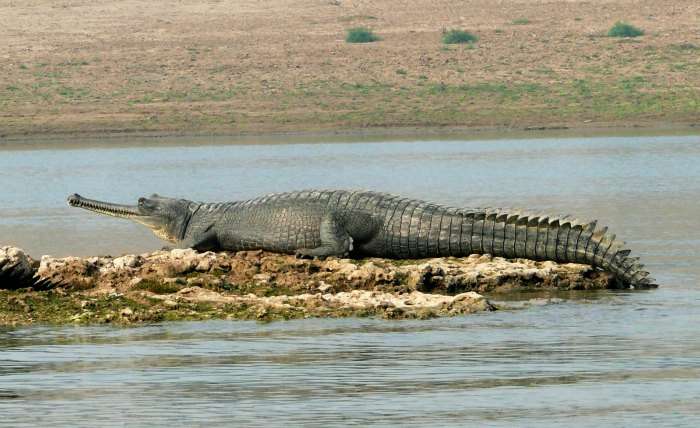
The National Chambal Sanctuary is a 2,100 square mile tri-state protected area specially built to protect the red-crowned roof turtle, the endangered Ganges river dolphin and the gharial. The beautiful Chambal river cuts through the sanctuary and runs at a point where the three states of Rajasthan, Uttar Pradesh and Madhya Pradesh combine. The majority of the sanctuary is limited to the waters and therefore the fauna too. Smooth-coated otters, tortoises, fish, mugger crocodile, Indian narrow-headed softshell turtle and other water mammals are found in majority.
Ideal for: Family, friends
Ideal trip duration: 2 hours
Location: Dholpur, Rajasthan 328001; the sanctuary also runs through Morena in Madhya Pradesh and Agra in Uttar Pradesh
Best time to visit: October to March
How to reach: A bus from Agra is the best and most convenient option to reach the sanctuary.
Staying Options: Fateh’s Retreat, Ranthambhore Regency, Hotel Tiger Haveli
Suggested Read: 10 Haunted Places In Rajasthan That Will Scare The Daylights Out Of You
4. Ramgarh Vishdhari Wildlife Sanctuary – Bundi

The Ramgarh Vishdhari Wildlife Sanctuary is located just 15 km from Bundi and is home to a variety of flora and fauna. The sanctuary acts as a buffer zone for the Ranthambore Wildlife Sanctuary. The sanctuary houses many wild predators including panthers, tigers, hyenas, antelopes and wild boars. The sanctuary also has widespread vegetation including mango, dhok, salar and khair trees. For visiting the sanctuary, you need to take a special permission from the forest department.
Ideal for: Friends, nature lovers
Ideal trip duration: 2 hours
Location: Bherupura Antri, Rajasthan 323001
Best time to visit: September to May
How to reach: With just 15 km from Bundi city, a bus or private taxi will easily ferry you to the sanctuary.
Staying Options: Hadoti Palace Bundi, Ishwari Niwas Palace Bundi, Hotel Bundi Haveli
Suggested Read: 5 Popular Hill Stations In Rajasthan For A Refreshing Escape From The Desert
5. Bassi Wildlife Sanctuary – Chittoragarh

The Bassi Wildlife Sanctuary is stretched over the western border of Vindhyachal mountains covering a total area of 15,290 hectares. The picturesque grasslands and vivid landscape of the sanctuary is a delight for nature lovers. You can find a variety of wildlife including panthers, jackals, hyenas, cheetah, antelopes, mongoose and wild boars. The Bassi and Orai dam are also some important attractions of the sanctuary.
Ideal for: Friends, families, nature lovers
Ideal trip duration: 3 hours
Location: Bassi, Rajasthan 312022
Best time to visit: October to February
How to reach: The sanctuary is well accessible from Chittorgarh so a hired taxi or bus is very much recommended to travel.
Staying Options: Bassi Fort Palace, Chittorgarh Fort Haveli, Lake Nahargarh Palace
Suggested Read: 14 Notable Places To Visit Near Kota For A Complete Trip To Rajasthan
6. Jaisamand Sanctuary – Udaipur
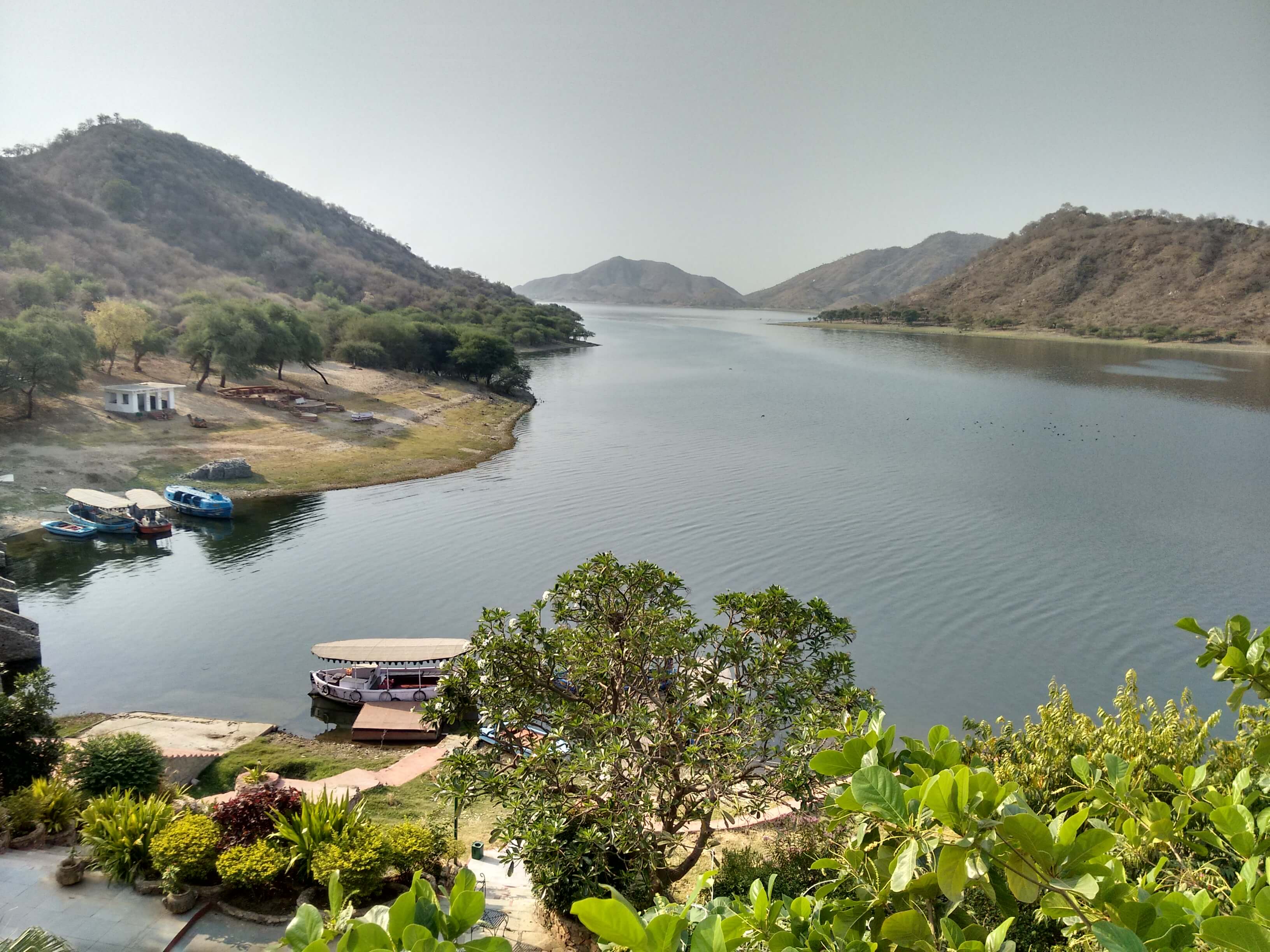
The picturesque city of hills, valleys and lakes welcomes you to one of the best wildlife sanctuaries in Rajasthan. The sanctuary is located on the banks of Dhebar or Jaisamand lake, which is the second largest artificial lake in Asia. The entire sanctuary of 52 square kilometer roams around the lake and consists of a variety of fauna and flora. The shores are covered with teak forests while the fauna is widespread including chital, langur, crocodiles, turtles and fishes.
Ideal for: Friends, family
Ideal trip duration: 3-4 hours
Location: Jaisamand , Rajasthan 313905
Best time to visit: July and August
How to reach: The sanctuary is very easily accessible by road from Udaipur so hire a taxi or take the local bus.
Staying Options: Jaisamand Island Resort, Karni Mahal, The Royal Retreat Resort & Spa
Suggested Read: 15 Tourist Places Near Jodhpur That Are Worth Extending Your Vacation In Rajasthan
7. Gajner Wildlife Sanctuary – Bikaner
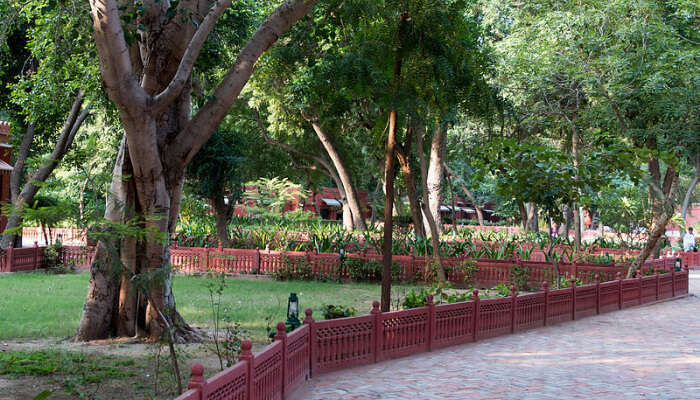
Image Credits: Daniel Villafruela for Wikimedia
Bikaner is famous for its heritage and culture city and forms a major connection between the Golden Triangle. However, the place has also given home to vivid flora and fauna in the form of Gajner Wildlife Sanctuary, which is one of the many places to visit in Bikaner. The sanctuary was formerly a hunting ground for the Maharajas of Bikaner. The sanctuary attracts nature enthusiasts who want to explore the desert wildlife. Slowly but steadily, the sanctuary is gaining popularity with fauna like black buck, wildfowl, antelope, nilgai, deer, chinkara and desert fox.
Ideal for: Nature photographers, wildlife enthusiasts
Ideal trip duration: 2-3 hours
Location: Gajner, Bikaner, Rajasthan 3343
Best time to visit: November to February
How to reach: You may hire a cab or auto from any part of the city or take an adventurous camel ride to reach the sanctuary.
Staying Options: Gajner Palace, Sai Hotel
Suggested Read: 14 Best Weekend Getaways From Ajmer To Experience The Culture And Opulence Of Rajasthan!
8. Tal Chhapar Sanctuary – Churu

Image Credits: Bishnu Sarangi for Pixabay
Do you want to surprise yourself with grasslands in the heart of the Thar? Then the Tal Chhapar Sanctuary is the best bet for you. Located in the Shekhawati region of Churu district, the sanctuary is an important resting ground for the endangered blackbuck. Though small in size, the sanctuary has rich biodiversity where you can spot several other animals including desert cats, chinkara and migratory birds from Siberia. It is one of the finest weekend getaways from Jaipur, located just 200 km away.
Ideal for: Wildlife enthusiasts, family, friends
Ideal trip duration: 3 hours
Location: Beer Chhapar Rural, Churu, Rajasthan 331502
Best time to visit: November to February
How to reach: With Jaipur being the closest city, a bus or hired taxi would be the best way to reach the sanctuary
Staying Options: Tal Chhapar Forest Rest House, Manu Homestay, Hotel Chandan Palace
Suggested Read: Monsoon In Jaipur: A Guide To Explore The Pink City Of Rajasthan!
9. Desert National Sanctuary – Jaisalmer

Situated close to Jaisalmer, this is another major Sanctuary of Rajasthan. It spreads across 3162 sq kilometers or area forming the largest national park in India. The sanctuary provides an instance of a brilliant desert ecosystem. The landscape is also unique. Despite its landscape, the sanctuary is filled with birdlife. The most common birds found here include the Great Indian Bustard, kestrels, sand grouse, laggard falcons, tawny eagles, spotted eagles, vultures, falcons, harrier, short-toed eagles, buzzards, and eagles.
You will also find a great collection of animal and plant fossils about 180 million years old. The most common animals you will see in the national park include blackbucks, chinkara, hedgehogs, desert cats, wolves, and Bengal foxes. However, the Great Indian Bustard happens to be the main attraction of the park.
Ideal for: Family, friends
Ideal trip duration: 2 hours
Location: Myajlar Road, Jaisalmer, Rajasthan 345001
Best time to visit: October to mid-March
How to reach: Jaisalmer railhead is the nearest railhead to Desert National Park
Staying Options: Damodra Desert Camp, Winds Desert Camp, Mehar Safari Camp
Suggested Read: Explore Top 13 Things To Do In Sikar: The Magnificent Desert City Of Rajasthan!
10. Kumbhalgarh Wildlife Sanctuary – Kumbhalgarh
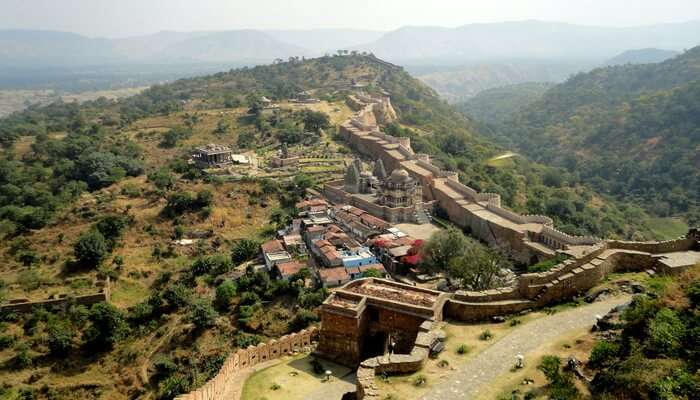
The Kumbhalgarh Wildlife Sanctuary is one of the best places to visit in Kumbhalgarh. It is located in the district of Rajsamand in Rajasthan. It covers an area of about 578 sq km while surrounding the borders of the Kumbhalgarh Fort. In this sanctuary, you will find a wide variety of animals, out of which many of them are endangered species. The animals you will get to see in the sanctuary in abundance include chinkaras, hares, four-horned antelopes, sambhar, nilgai, jungle cats, sloth bears, hyenas, wolves, and leopards.
The sanctuary is also the home of a large variety of birds including grey jungle fowl, doves, bulbuls, peacocks, white-breasted kingfisher, golden oriole, pigeons, and parakeets. The natural beauty of the sanctuary is what attracts visitors from all over the world to this place.
Ideal for: Family, friends
Ideal trip duration: 2 hours
Location: Kumbhalgarh, Rajasthan 313325
Best time to visit: October to march
How to reach: people can reach Kumbhalgarh Wildlife Sanctuary by road via the NH-76 from Udaipur.
Staying Options: Ramada Resort, The Kumbha Residency, Royal Kumbhalgarh Villas
Suggested Read: Popular Cafes In Bikaner To Hangout With Your People On A Rajasthan Trip
11. Mount Abu Wildlife Sanctuary – Mount Abu

Located in the Aravalli Hills, the Mount Abu Wildlife Sanctuary is popular in Rajasthan. It is situated at an elevation of 300 meters to 1722 meters. This sanctuary has a great collection of trees and plants. One of the best places to visit in Mount Abu, there are about 112 different plant families that belong to 820 species and 449 genera. This comprises a variety of trees, shrubs, climbers and tuberous plants. You can also find some of the orchid species in the sanctuary.
In this sanctuary, you will find a huge variety of animals including tigers, lions, leopards, porcupines, hedgehogs, mongoose, Indian hares, bears, pangolin, wild boars, foxes, langurs, hyenas, and more. Besides the wildlife, you can find 250 species of birds. The grey jungle fowl happens to be the main attraction of the Mount Abu Wildlife Sanctuary.
Ideal for: Family, friends
Ideal trip duration: 2 hours
Location: Shergaon Path, Block No. 2, Rajasthan 307501
Best time to visit: October to march
How to reach: The nearest railway station is Morthala railway station, which is 18 Kms away from Mount Abu
Staying Options: Ratan Villas, Achal Resort, Hummingbird Resort
Suggested Read: 15 Places To Visit In Rajasthan In January Which Has Something More Than Just The Palaces!
12. Sita Mata Wildlife Sanctuary – Pratapgarh

Spreading across an area of 423 sq km, the Sita Mata sanctuary is a protected area and also one of the most important wildlife sanctuaries of Rajasthan. It is situated in the Pratapgarh district. The rivers Budho, Tankiya, Karmoi, Sita Mata, and Jakham flow through the woods of the sanctuary. The Sita Mata wildlife sanctuary is also known as the Bird Paradise. It has a large variety of avian species.
However, the most common types of birds to be seen here include little egret, cattle egret, Indian darter, tawny eagle, little grebe, grey heron, white-eyed buzzard, little cormorant, black-winged stilt, and others. The black-necked monarch and the white-throated ground thrush are found in the Sita Mata Wildlife Sanctuary.
The most common animals found in the sanctuary include nilgai, caracal, wild bear, jungle cat, hyena, four-horned antelope, and several others. The main attraction of this sanctuary is the vegetarian mammal flying squirrel.
Ideal for: Family, friends
Ideal trip duration: 2 hours
Location: Seeta Mata Forest Reserves, Arampura, Rajasthan 313604
Best time to visit: October to June
How to reach: The nearest airport is the Dabok Airport located in Udaipur, about 145 Kms away
Staying Options: Pratap Niwas
Further Read: Get The Rajasthani Bohemia On! 17 Amazing Shopping Places In Jaipur To Explore
Rajasthan is best known as the land of kings and is famous for its rich history. It remains to buzz with tourists all round the year. It is an ideal place for both history and wildlife lovers. If you are planning tour the wildlife sanctuaries in Rajasthan then winters are the best time to do it. With a variation in the land, the place offers several regions where you can spot different animals altogether. So while you’re planning a vacation in Rajasthan make sure to enjoy a time away from the hustle bustle and enjoy a great time amid the wildlife.
Disclaimer: TravelTriangle claims no credit for images featured on our blog site unless otherwise noted. All visual content is copyrighted to its respectful owners. We try to link back to original sources whenever possible. If you own rights to any of the images and do not wish them to appear on TravelTriangle, please contact us and they will be promptly removed. We believe in providing proper attribution to the original author, artist or photographer.
Please Note: Any information published by TravelTriangle in any form of content is not intended to be a substitute for any kind of medical advice, and one must not take any action before consulting a professional medical expert of their own choice.
Frequently Asked Questions About Wildlife Sanctuaries In Rajasthan
How many wildlife sanctuaries are there in Rajasthan?
There are about 37 wildlife sanctuaries in Rajasthan.
Which sanctuary of Rajasthan is famous for tigers?
Ranthambore National Park, Sariska National Park are especially famous for tigers.
Are there lions in Rajasthan?
The last lion of Mount Abu in Rajasthan was spotted in 1872. By the late 1870s, Lions became extinct in Rajasthan.
How many tiger reserves are there in Rajasthan?
There are about 3 tiger reserves in Rajasthan.
What type of animals are spotted?
The animals you will spot majorly are the leopard, owlets, ubiquitous langur, panthers, hyena, jungle cat, jackal, caracal, antelopes, blackbuck Indian fox, marsh crocodiles, wild boar, desert fox, bears, etc.
Which is the best season for these sanctuaries to be visited?
Winter season from October to March is ideal for visiting these sanctuaries.
When do most of the sanctuaries operate?
Generally, they open at 9:00 am and close after sunset, at 6:00 pm.
How many biosphere reserves are there in Rajasthan?
There are 3 national parks and 37 wildlife sanctuaries in Rajasthan.
How do I get to Mount Abu Wildlife Sanctuary?
Mount Abu Wildlife Sanctuary is 18 km from Mount Abu and can be reached via car.
People Also Read:
Wildlife Sanctuaries In Arunachal Pradesh Wildlife Sanctuaries In Maharashtra Wildlife Sanctuaries In Tripura

Exploring new places and trying out new food cuisines are two things that bring Seema all the happiness. Travel freak and a die-hard foodie are the synonyms that define her the best. Popular on social media by the name of ‘PandaReviewz’, lazing around the beaches, exploiting the sunset points, visiting the farthermost villages, exploring the renowned cities, trying out new food cuisines, and blogging about them are few things that keep Seema occupied, and happy!






